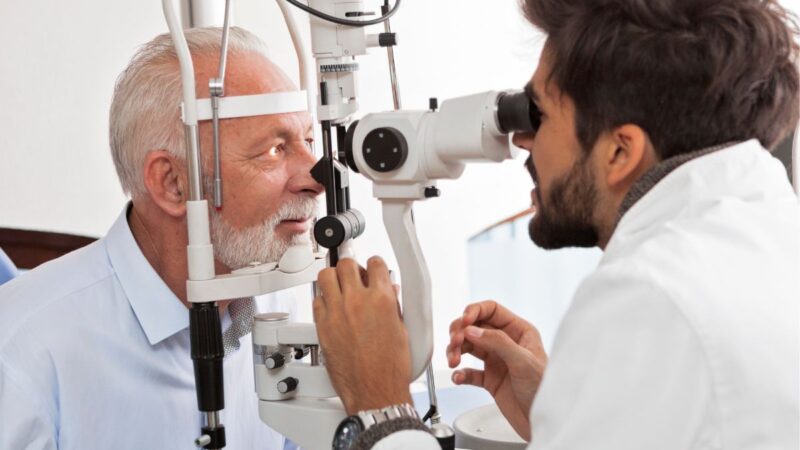Andalusia Pediatrics Clinics: Dedicated Look After Your Child's Health
Andalusia Pediatrics Clinics: Dedicated Look After Your Child's Health
Blog Article
The Advantages And Disadvantages of Various Refractive Surgical Procedures for Enhanced Eyecare

LASIK Surgical Procedure
LASIK surgical procedure is a typically executed refractive treatment that intends to remedy vision problems such as astigmatism, farsightedness, and nearsightedness. Throughout the procedure, a slim flap is produced on the cornea, and a laser is utilized to improve the underlying cells, correcting the refractive error.
One of the primary benefits of LASIK surgery is the quick enhancement in vision experienced by many clients. A lot of individuals discover a significant enhancement in their sight soon after the treatment, with marginal downtime required for recovery. Furthermore, LASIK is known for its high success price and reduced occurrence of difficulties when performed by competent cosmetic surgeons. Like any kind of surgical procedure, LASIK additionally carries some threats, consisting of dry eyes, glare, halos, and under or overcorrection of vision. It is crucial for individuals taking into consideration LASIK surgery to go through a detailed assessment by an eye treatment expert to identify if they are suitable prospects for the procedure.
PRK Procedure
The PRK procedure, additionally known as Photorefractive Keratectomy, is a sort of refractive surgical procedure that aims to deal with vision concerns similar to LASIK surgical procedure. Unlike LASIK, which includes creating a flap in the cornea, PRK works with the surface layer of the cornea. During the PRK procedure, the external layer of the cornea, called the epithelium, is eliminated to allow improving of the underlying corneal cells with an excimer laser. This reshaping helps to deal with refractive mistakes such as farsightedness, nearsightedness, and astigmatism.
One of the advantages of PRK over LASIK is that it removes the risk of flap-related issues because no flap is produced throughout the surgical treatment. In spite of the longer healing period, PRK can be a suitable alternative for people seeking vision modification surgical procedure.
SMILE Surgical Treatment
A sophisticated refractive surgery strategy getting popularity in the field of ophthalmology is SMILE Surgical procedure. Small Incision Lenticule Extraction (SMILE) is a minimally invasive procedure that remedies vision by improving the cornea using a femtosecond laser. Unlike traditional LASIK surgery, SMILE Surgical treatment entails creating a tiny laceration in the cornea to extract a lenticule, which results in less disturbance to the corneal framework and possibly faster recuperation times.
One of the main advantages Clicking Here of SMILE Surgery is its capability to treat nearsightedness (nearsightedness) and astigmatism with high precision, resulting in outstanding visual outcomes for patients. The minimally invasive nature of the treatment also decreases the threat of complications such as dry eye syndrome, making it a beneficial option for individuals looking for refractive surgical treatment.

LASEK Method
Having explored the advantages and factors to consider of SMILE Surgery, one more significant refractive surgical procedure strategy worth examining is the LASEK Technique. LASEK, which stands for Laser-Assisted Subepithelial Keratectomy, is a kind of laser eye surgical treatment that intends to remedy refractive errors such as nearsightedness (nearsightedness), hyperopia (farsightedness), and astigmatism.
Unlike LASIK, LASEK does not entail developing a corneal flap. Instead, throughout a LASEK treatment, the specialist uses a watered down alcohol remedy to loosen the slim external layer of the cornea, understood as the epithelium. This layer is after that gently moved apart to allow the laser to improve the underlying corneal tissue. When the cornea has been reshaped to the desired level, the epithelial layer is repositioned.
Among the primary benefits of LASEK is that it can be appropriate for individuals with thin corneas that might not wikipedia reference be great candidates for LASIK. Additionally, LASEK usually results in minimal post-operative pain and a quicker recuperation time compared to PRK. The visual recovery procedure with LASEK may be somewhat longer than with LASIK.
Implantable Call Lenses
Implantable Call Lenses offer a long-term vision correction option for individuals looking for a choice to standard call lenses or glasses. These lenses, additionally called phakic intraocular lenses, are operatively placed into the eye to correct refractive errors such as myopia (nearsightedness), hyperopia (farsightedness), and astigmatism. cardiologist andalusia. Unlike conventional contact lenses that rest on the surface area of the eye, implantable contact lenses function within the eye itself, supplying clear vision without the requirement for everyday maintenance or removal
One of the vital advantages of implantable call lenses is their permanence. As soon as put, they can stay in the eye forever, offering secure and regular vision adjustment. Furthermore, these lenses can be an outstanding choice for individuals that are bad prospects for laser eye surgical treatment or that like a relatively easy to fix vision improvement treatment.
Nevertheless, implantable call lenses do lug some threats, consisting of the capacity for cataracts or enhanced eye pressure. It is critical for individuals considering this choice to seek advice from with an eye browse around here treatment expert to identify if implantable get in touch with lenses are the appropriate selection for their details needs and eye health and wellness.
Conclusion
In verdict, each kind of refractive surgical procedure has its very own advantages and drawbacks. LASIK surgical treatment is prominent for its quick healing time, while PRK treatment might be ideal for clients with slim corneas.

In General, SMILE Surgery presents an appealing choice for people looking to enhance their vision via refractive surgery.
Report this page